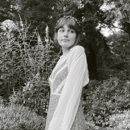On my nineteenth birthday, I dragged my friends to the Strand Bookstore so that I could spend some time surrounded by books and people I love. We found ourselves in the basement, which is the easiest part of the store to lose track of time in, wading our way through aisles of literary nonfiction. On the far corner of a top shelf, I noticed a tattered brown hardcover that I felt drawn to for some indescribable reason. Maybe the dim lighting hit the spine at an eye-catching angle, or maybe it just seemed neglected so I felt inclined to brush the dust off. I pulled it off of the shelf to examine and realized that it was a copy of Rainer Maria Rilke’s Letters to a Young Poet. It’s a book that I had been wanting to read for quite some time, so I was excited by the prospect of finally owning a copy, but when I opened the book, I discovered the real magic of the beaten up copy. There were two notes written on the inside cover to the past owners of the book. They read, as follows:
“For Gloria, Happy Birthday my love. –Alex 1958”
“NYC 1998– From book sale at the Bloomingdale branch of the New York Public Library, on the occasion of Lili’s first trip to the library.”
Immediately, I fell in love with the old book in my hands. I was already looking forward to reading it, but to know that I was holding something that had been passed down to multiple people across more than 60 years was something entirely different. To know that the contents of Rilke’s letters were important enough to be given as a gift multiple times, and to know that this copy had been gifted with such specific intentions and love, left me with a sense that this book would earn a spot among my most cherished reads.
Rilke’s letters hold so much honesty and clarity that I’ve found myself entirely reframing the way that I think about writing. It’s less about searching for validation and opportunities to turn writing into a career and more about understanding my own creative soul. If the passion for writing isn’t being continually fed, then there is no point in writing at all. The book showcases an incredibly personal side of Rilke. We get to see his writing in a less formal setting, and as a result we see the way that he talked about writing when he didn’t have the expectation of an audience. I admired Letters to a Young Poet because Rilke managed to convey the reality about the life of a writer in a way that wasn’t condescending or discouraging even in the moments of harsh truth.
The story of how this book came together is a fascinating account in its own right. It’s a collection of ten letters that Rilke sent to Franz Xaver Kappus–an Austrian military officer who was nineteen years old at the time of correspondence. Kappus reached out to Rilke in 1902 seeking advice and critiques on his poetry as well as advice on whether or not he should pursue a career in writing or in the army. Rilke responded, declining to critique Kappus’s work because, “Nobody can counsel and help you, nobody. There is only one single way. Go into yourself,” (Rilke 18). He instead offered Kappus advice regarding how a poet should view the world, and this response struck up a regular correspondence between the two of them that lasted until 1908. Kappus published Rilke’s letters in 1929, three years after Rilke’s death. While these letters were at first only intended to be read by Kappus, they’ve become a trademark text for any young poet, or any young artist, for that matter.
The context of the book’s history is crucial to understanding the overall significance of the book. Rilke never knew these letters would be published, so he wrote intimately, with vulnerability. Rilke’s understanding of who his audience was at the time of writing to Kappus is different than what the audience ended up being, so the reader has a unique opportunity to read writing that has no awareness of its broader audience. It’s written for one person, and one person only. This is part of why the book has maintained so much relevance over nearly one hundred years. It’s easy to connect to because it reads as if Rilke is talking directly to the individual reader, so everyone’s experience of reading these letters is different. It’s a special and unique experience to read profoundly personal letters from such a celebrated poet.
There is also something relatable about Kappus’s quest for Rilke’s advice and his desire to hear advice from one of his heroes. Kappus is the unspoken second side of the conversation, and we fill in many of his unseen questions with our own. Filling in the blanks as we go, we see ourselves in Kappus and find comfort in Rilke’s gentle, though honest, guiding words. Kappus is an aspiring writer, often fraught with loneliness and confusion as he adapts to his young adult life, and much of the book’s target audience is dealing with the same conflicts. While Kappus is remembered primarily as the person on the other end of Rilke’s letters, he did go on to publish his own poetry and novels. He continued his career in the military, but he also worked as a journalist, editor, screenwriter, novelist, and poet. He found a way to make room for his art in his life and to understand solitude–something that Rilke talked about adamantly in his letters to Kappus.
Rilke’s writing is so well known and well respected for a reason: he speaks truth beautifully. These letters are a testament to his strengths as a writer because they are such an excellent example of his voice. Even in a somewhat informal setting, he showcases his control in prose by using each word carefully and precisely. His greetings to Kappus, while casual in sentiment, still ring true to his voice as a poet with a love for beautiful words (“You shall not be without a greeting from me when Christmas comes and when you, in the midst of the holiday, are bearing your solitude more heavily than usual,” (Rilke 45). The letters showcase his writing voice in a unique way because they are so personal. It’s a chance to see how Rilke’s casual correspondence compares to his published writing, and it’s clear that he has a similar sense of formality and eloquence in both settings. His voice is consistently strong and well established across both circumstances.
Letters to a Young Poet is also evidence of Rilke’s understanding of the musicality of writing. He’s extremely talented at writing prose in a poetic way, which isn’t necessarily surprising, but it is impressive. I think one of the trademarks of a great writer is the ability to work with the sounds of words to create something that not only means something beautiful but also sounds beautiful, and the letters read as beautifully as a song. While a lot of this musicality is due to diction and Rilke’s vocabulary, part of it also comes from rhythm. His sentence structures flow together in a way that elevates the eloquent diction, creating the perfect storm of writing that is both rich in meaning and rich in beauty. An example of Rilke’s use of diction and rhythm can be found in a passage from the seventh letter:
“We know little, but that we must hold to what is difficult is a certainty that will not forsake us; it is good to be solitary, for solitude is difficult; that something is difficult must be a reason the more for us to do it. To love is good, too: love being difficult.” (Rilke 53)
This passage is also an interesting example of a stylistic decision that Rilke often makes in his writing: the consistent use of colons and semicolons. This specific choice contributes to the musicality of his work, alongside diction and rhythm, because it allows for his thoughts to flow together seamlessly. Where a period conveys a clear end to a sentence, semicolons allow ideas to be linked together in a different way. The ideas maintain their own structure, but they are connected rather than harshly divided. The reader still pauses at a semicolon similarly to a period, but the ideas themselves seem to flow easier. While this is a very specific element of Rilke’s style, it is consistent throughout the book and greatly contributes to the general voice of his writing.
Another consistency in Rilke’s letters to Kappus was his emphasis on learning to cope with solitude and to use time alone to your advantage as a writer. Rilke believed that going “into yourself,” is one of the most important factors in growing as a writer. It allows for the time and space to observe life without the input of other people. He opened his first letter to Kappus with the notion that nobody can tell you how to write besides yourself, and this notion of being in touch with the self remains a constant theme. In the sixth letter, he wrote that, “The necessary thing is after all but this: solitude, great inner solitude,” (Rilke 45). He believed that being alone makes it easier to connect to nature and reach a wider perspective of life and Earth that cannot be achieved with the intervention of other people. The emphasis on solitude as the best way to grow as a writer threads each letter together into a cohesive piece of writing. Rilke’s meditation on solitude is echoed by many great writers across generations, reinstating the point that the advice in his letters comes from a genuine place because he himself lived through all of the questions that Kappus was asking.
In so many ways, every writer has the same doubts. Every writer desires direct feedback about whether or not their work is good. Every writer wants writing to be easier than it really is. Rilke understood this remarkably well, perhaps because he shared these doubts; he was writing from a place of true sincerity because he was the same as every writer who came before him and every writer who came after him. Perhaps he recognized a bit of himself in Kappus, just as so many of us do, and wanted to share the wisdom that he wished he had at nineteen years old.
It’s no surprise that these letters have maintained so much relevance and fame after nearly a century of being published. Rilke cut to the heart of what it means to be a poet, but, more broadly, he cut to the heart of what it means to be an artist, and what it means to be a human that is awake to the beauties of the world. It’s the rare kind of book about writing that can be enjoyed by nonwriters because Rilke so clearly sees that writing is life. He speaks about writing and passion for writing in a way that can be applied to anyone’s goals or dreams.When you have been called to do something with your life, whether that is writing or accounting or training to be a doctor, the approach is always somewhat the same: “…build your life according to this necessity; your life even into its most indifferent and slightest hour must be a sign of this urge and a testimony to it,” (Rilke 19). You devote yourself to your calling entirely, and learn to live your life in a way that will inform and grow your passion for that calling.
After watching me fawn over the beloved copy of Letters to a Young Poet in the Strand basement on my birthday, my roommate pried it from my hands, insisting that she buy it for me as a birthday gift and continue the book’s legacy. Now, the book sits proudly at the top of my bookshelf with a new inscription on the inside cover, where it will stay, well loved, until I find the right person to pass it down to.
“For Ellie– Happy nineteenth! Love, Grace (2021)”


